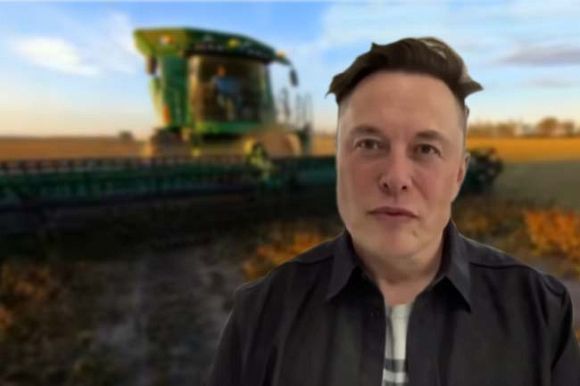Regenerative agricultural practices can reverse the devastating effects of climate change, thus saving ecosystems and also ourselves, writes Dr Charles Massy.
OUT PLANETARY SYSTEMS and human society are descending into a new, frightening Anthropocene epoch. Climate change, biodiversity loss, degradation of landscapes and water cycles, and destabilisation of the integrated nitrogen-phosphorous cycles are symptoms of the problem.
Helping to destabilise planetary systems is modern industrial agriculture. Yet many of the best alternatives to our planetary crisis reside in the field of agriculture itself. Foremost of these alternatives can be found in an evolving regenerative agriculture movement.
Take climate change and the work of Paul Hawken and colleagues in Drawdown. ‘The most comprehensive plan ever proposed to reverse global warming’ of 2017 reveals that, of the 80 calculated best methods of drawing down CO₂ from the atmosphere, ten of the top 20 are variants of regenerative agriculture. Taken together, regenerative agriculture is one of our very best avenues to such desperately needed carbon drawdown.
And in constructively addressing our climate crisis, the positive regenerative impacts don't stop there. Once you begin capturing and fixing more carbon in the soil, this, in turn, has multiple and positive knock-on effects. First, fixing extra carbon in the soil is the key initial step to addressing land degradation.
Second, healthy organic carbon stimulates soil life, which, in turn, radically impacts the water cycle by enabling greater water storage and healthier, diverse plant growth and ground cover so as to prevent water loss. In turn, and third, this extra carbon and water impacts and enriches biodiversity of all kinds.
Fourth, these benefits create conditions where the wasteful and damaging industrial addition of synthetic nitrogen and phosphorous can be both eliminated and their impact nullified. Fifth, healthy soil biology also means the elimination of harmful chemicals like pesticides and herbicides (such as glyphosate, now shown to be wreaking havoc on human and animal health), as natural pest control and alternate means of grazing and cropping are enabled to be expressed.
Finally, healthier soil biology (which means greater nutrient and mineral richness in our plants), in combination with the elimination of human-made poisons, pharmaceuticals and the like, means regenerative agriculture is also playing a huge role in addressing many of the causal factors of modern human health diseases.
The regenerative agriculture revolution is now rapidly spreading globally. Today in Australia, due to increasing recognition of the power and importance of regenerative agriculture to planetary, human and animal health, tens of billions of dollars of philanthropic, corporate and private money are pouring into this regenerative space.
It is going to the Great Barrier Reef where regenerative agriculture is having a huge healing impact in regard to nutrient run-off. It is also being directed at repairing the widely degraded landscapes that are the legacy of an invading settler economy and our prevailing economic rationalist worldview.
There is an increasing understanding that land is not an inert resource for just maximising profit. Instead, once we understand how landscapes function, then regenerated landscapes can provide a major solution for our own and our planet's long-term survival.
As environmental and futurist thinker David Korten once said: ‘The Great Turning... requires reframing the cultural stories by which we define our human nature, purpose and possibilities.’ He further explained that ‘change begins with a story of the wonder and beauty of life and the cosmos’, stories ‘so compelling as to displace in the public mind the story of Sacred Money and Markets’.
That is, top-down policy shaped by the ‘Sacred Money and Markets’ ruling paradigm will only exacerbate our planetary emergency. We need instead to listen to, learn from, follow and encourage the “bottom-up” or “underground” revolution of regenerative agriculture and its associated urban “green” and food cultures.
Human society must regenerate the key landscape functions of the solar cycle, water cycle, soil-mineral cycle and biodiversity. We must do this in conjunction with a reborn human-social factor that nurtures rather than destroys. With such a philosophy and regenerative practices, we can renew not just our landscapes but our planetary and human health.
Dr Charles Massy has chaired and served as a director on a number of national and international review panels and boards of business, research organisations and statutory wool bodies, involving garment manufacture, wool marketing, R&D, molecular genetics and genomics.
Related Articles
- UN warns Australia in danger of increased wildfires
- Billionaire activism reveals the failure of Australian democracy
- UK Trade Agreement a climate disaster
- Scott Morrison's 'let them eat coal' Party
- Protests distract Government from climate crisis
 This work is licensed under a Creative Commons Attribution-NonCommercial-NoDerivs 3.0 Australia License
This work is licensed under a Creative Commons Attribution-NonCommercial-NoDerivs 3.0 Australia License
Support independent journalism Subscribe to IA.












